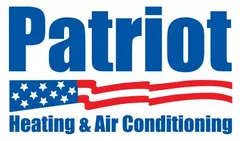What is HVAC?
HVAC (heating, ventilation, and air conditioning) refers to the systems that regulate indoor, environmental comfort by providing heat and cool air for humans and animals alike. You likely have heard of furnaces and air conditioners — these systems are part of what makes up HVAC.
Explaining the elements of hvac
There are multiple components that make up an HVAC system, each of which have complex systems of their own. Heating is the first element.
Heating system
The heating system of a home or building involves a boiler, furnace, or pump, which is housed in a central location, such as a furnace room or mechanical storage area. The heating system produces a flame, which warms air or water, depending on the system.
Furnace heating systems warm air, which fans distribute throughout the building via a metal or fiberglass duct system. When boilers heating systems are used, pipes distribute the hot water throughout the building by means of a pump. The water ends up in radiators, which then distribute the heat through convection and radiation (air around the radiators warms up as it picks up heat). The use of water to transfer heat is known as hydronics.
Ventilation
The second element in an HVAC system is ventilation. Ventilation is the process of drawing in fresh air to control temperature or to remove combinations of moisture, odors, smoke, heat, dust, airborne bacteria, and carbon monoxide. Ventilation includes the exchange of air from both outside and inside a building to maintain good air quality.
There are two types of ventilation: mechanical ventilation and natural ventilation.
Mechanical ventilation
In mechanical ventilation, an air handler provides mechanical (forced) ventilation with fans to control the quality of indoor air. This system controls humidity, odors, and contaminants by pulling in outdoor air and running air through filters and humidity-control systems.
Natural ventilation
Natural ventilation regulates air without using fans or other systems. Quite literally, natural ventilation takes advantage of natural wind and convection currents so air can come in and out of an indoor space on its own. Open windows are an example of such natural ventilation.
Natural ventilation systems use very little energy but require regular service checks to ensure that they maintain long-term comfort. Their drawback is that they do not allow indoor heat or humidity levels to remain constant.
Air conditioning
The third element of HVAC systems is air conditioning. Air conditioning systems control humidity, ventilation, and temperatures in a building or house in order to maintain the desired conditions. An air conditioner draws heat out of the structure, transfers it outside, and replaces the air inside with cooler air.
Are you looking at hiring an HVAC service? Patriot Heating and Air Conditioning deals with all facets of HVAC systems and offers heat pumps, furnaces, hybrid systems, humidifiers, residential filtration systems, air conditioners, and more. Contact us for all your HVAC needs.
